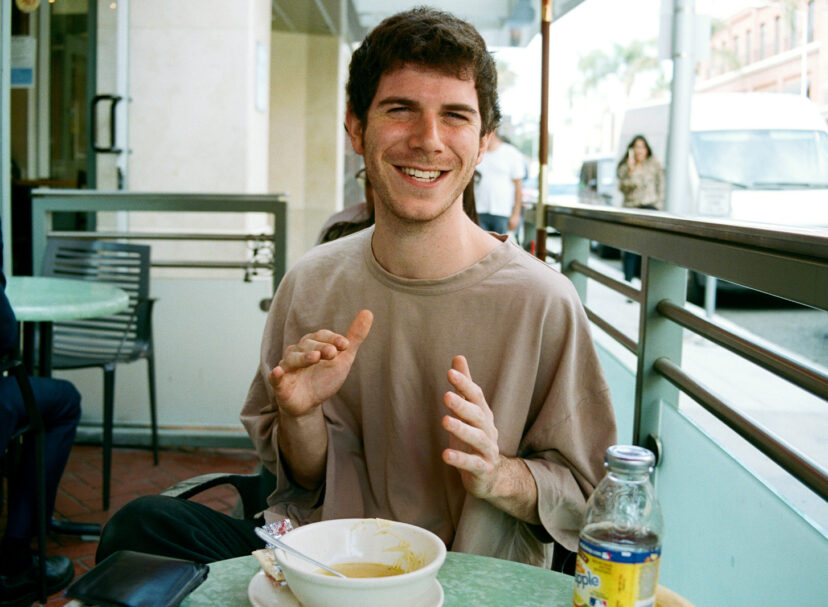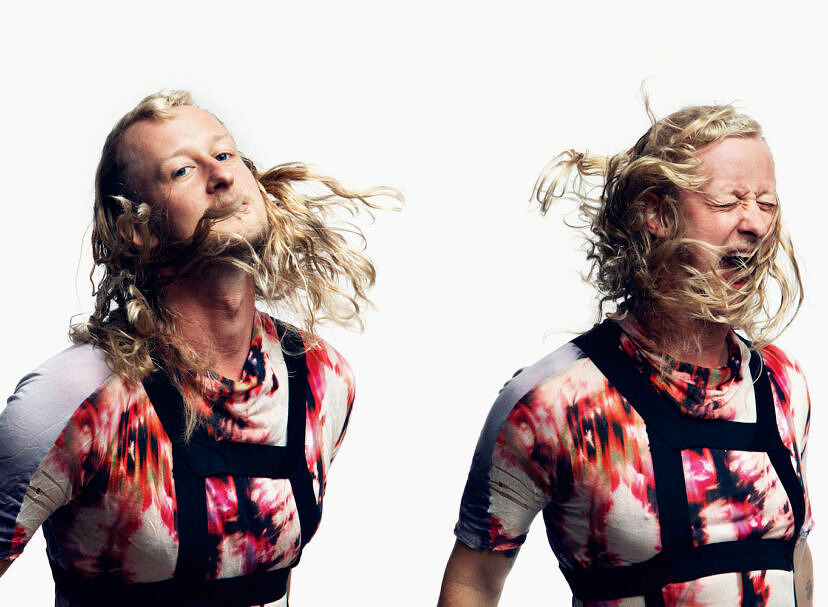Text & Interview: Alec Coiro
Photo: Chad Miller
Cars and Trains is the name that Tom Filepp records under when he is making his thoughtful, determined music that balances a mix of guitar, piano, and electronics with a focus on lyrical craftsmanship. The Portland-based artists also create music True Deceiver, which is more on the electronic end of the spectrum, but currently, the focus is on the release of the new album Fictions from the Cars and Trains hemisphere of his mind.
As the title suggests, there is a literary bent to the music of Cars and Trains. We talk below about the influence of Borges, and it is science fiction that informs the albums “Scientific Method.” The album as a whole is in the spirit of the scientific American tinkerer, recorded entirely in Filepp’s home studio, and the intimacy and honesty of the album reflect its homespun origins.
The single “Scientific Method” is already out with the album to follow shortly on October 6th. We reached out to Filepp and got advance intel on the album.
As an artist who engages in folk music and electronic music simultaneously, would it be fair to say that some records are more electronic than others, and if so how would Fictions fit into that spectrum?
I’ve always kind of tried to find a middle ground with this stuff. My first EP and then the record was a lot closer to electronic than the folk side. They all use a heavy amount of acoustic instruments though, so like Fictions, it’s down the middle of the road where it fits for me.
The song “Scientific Method” seems to me to be a genuine meditation on science, so I wonder how much does scientific understanding and method fit into the meaning of the song?
I guess you could say I’m an “armchair scientist”; I grew up in a family that was very science fiction oriented, and as a consequence hard science had a lot of resonance and relevance in our house. My understanding of a lot of it still comes from a lay-person’s perspective, but I felt comfortable enough about general concepts to use some broad brush strokes as metaphors in that song.
The idea was to make this narrative that pulled and tugged between personal experience and these larger astronomical bodies, painting our day to day struggles into relief against the gigantic gravitational pulls these planets, moons, and galaxies exert on each other. I’m both trying to put my daily problems in context, but it’s also about the importance of knowing you’re part of that enormous and near infinitely complex amount of beauty.
Is the song “The Map Becomes the Territory” a reference to the Borges story? Do you often look to fiction for your inspiration, or is that only the case on the album Fictions?
I definitely had Borges in mind with the song— I love that story “On Exactitude in Science”. That song is actually much more about the pitfalls of nationalism in general though, and the violence of imaginary borders on real, living, breathing people. The Borges connection was something that kind of just happened organically while I was writing it, sort of a happy accident that slipped in. In a lot of ways “The Map Becomes the Territory” is actually also a reference and hand wave to the song “Nations” on my album We Are All Fire. I do a lot of referencing old songs all throughout my albums. It’s fun and makes it into its own tiny kind of universe.

I'm both trying to put my daily problems in context, but it's also about the importance of knowing you're part of that enormous and near infinitely complex amount of beauty.

You’re Portland-based, but you chose a painting of Manhattan for your cover. Is the choice due to an affinity for New York, is part of a narrative being weaved on Fiction, or is it something else entirely?
There’s a couple of reasons for it, first: I’ve wanted to use a painting from my friend Adam O’Day in Boston for years now for album artwork. He’s really great and so when I saw that painting of Manhattan from Stuyvesant Village I thought it was perfect. (http://www.adamjoday.com)
That aside, I’m originally from downstate New York, so spent a ton of time there growing up. Most of my family is either from there or shuffled through at one point or another. In some way it’s kind of a hometown—it’s very familiar and comfortable. There’s sort of a mythology or magic about most of my family shuffling in through the Bronx, Manhattan and Brooklyn at one point, some of them a long time ago. I can do a mean Anthony Scaramucci impersonation.
You also make music as True Deceiver. Is it difficult to compartmentalize your various projects?
Creatively it’s interesting— I try to keep them somewhat distinct but I do love when techniques or styles bleed over from the projects. It’s really hard to choose how to spend time on one or the other though. And I do find it pretty difficult to tour on both of them.
Do you often play live? Will you tour to support Fictions?
I do quite a bit, although not as much in the states the past year or so. My hope is to get out on the road on the west coast in early 2018 for Fictions, and then head back to Europe, too. Hopefully some other spots in the US, but I’ll figure it out as I go. First I need to figure out how to play all of this stuff live, with my looping setup!


